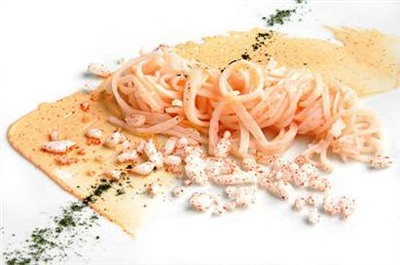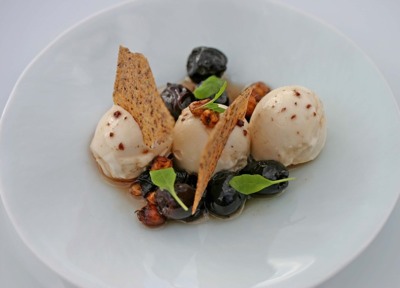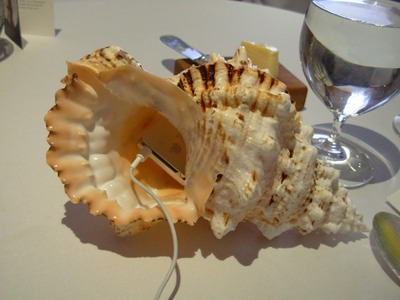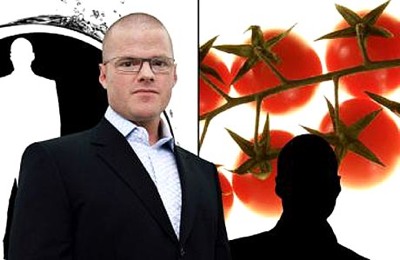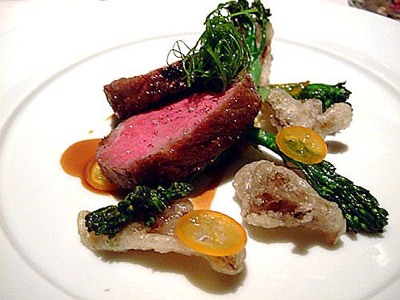 Mysteries
Mysteries  Mysteries
Mysteries  History
History 10 Surprising Stories About the Texas Rangers
 Humans
Humans 10 Philosophers Who Were Driven Mad by Their Own Theories
 Miscellaneous
Miscellaneous 10 Video-Game-Worthy Weapons and Armors from History
 Weird Stuff
Weird Stuff 10 Psychics Who Accurately Predicted Wartime Events
 The Arts
The Arts 10 Pieces of Art Inspired by a Broken Heart
 Health
Health 10 Science Fiction-Sounding New Medical Treatments
 History
History 10 Surprising Facts About the Father of Submarine Warfare
 Space
Space Ten Astonishing New Insights into Alien Worlds
 Weird Stuff
Weird Stuff 10 Bizarre Summer Solstice Rituals Still Practiced Today
 Mysteries
Mysteries Top 10 Haunting Facts About the Ghost Ship MV Alta
 History
History 10 Surprising Stories About the Texas Rangers
 Humans
Humans 10 Philosophers Who Were Driven Mad by Their Own Theories
Who's Behind Listverse?

Jamie Frater
Head Editor
Jamie founded Listverse due to an insatiable desire to share fascinating, obscure, and bizarre facts. He has been a guest speaker on numerous national radio and television stations and is a five time published author.
More About Us Miscellaneous
Miscellaneous 10 Video-Game-Worthy Weapons and Armors from History
 Weird Stuff
Weird Stuff 10 Psychics Who Accurately Predicted Wartime Events
 The Arts
The Arts 10 Pieces of Art Inspired by a Broken Heart
 Health
Health 10 Science Fiction-Sounding New Medical Treatments
 History
History 10 Surprising Facts About the Father of Submarine Warfare
 Space
Space Ten Astonishing New Insights into Alien Worlds
 Weird Stuff
Weird Stuff 10 Bizarre Summer Solstice Rituals Still Practiced Today
Top 10 Unusual Cooking Concepts
I am sure by now that the majority of people here know that I am a great fan of cooking and particularly love modern cuisine (often called molecular gastronomy because of the scientific nature of it). I have been wanting to do a list like this for some time and finally got around to it! This list comprises the 10 most common (but unusual) techniques used in haute cuisine at the moment. While they are not all new ideas, they are all unique in the way that they are now being put to use. These methods are becoming so popular that many amateur cooks are incorporating them into their home cooking. All I ask is that you read this list with an open mind – many of the things here may seen awful – but I assure you, once you taste this type of cooking, you are a convert.
Imagine a bowl of steaming prawn noodles – made almost entirely with prawns and including no flour (the prime ingredient in noodles). This is the type of food you can produce using Transglutaminase (“meat glue”). Transglutaminase breaks down the cells of meat and basically turns it to a mush that can be piped or shaped. It is used in commercial food for binding meats together (as in hot dogs and sausages) but it really comes to life in the hands of modern chefs. Pictured above is a plate of shrimp noodles by Wylie Dufresne, chef of New York’s avant-garde restaurant wd~50.
This is an incredibly exciting product being used in cooking. Methyl cellulose is a compound that turns to a firm gel when it is heated. For this reason, many bakeries mix it into their pie fillings to ensure that they don’t spill out of their pastry shells when cooking. But, the molecular gastronomers have found a more exciting use for it in their restaurants: hot ice cream! This is done by mixing a standard ice cream base with methyl cellulose (1.5% of the total recipe) and submerging a scoop filled with the liquid into a pot of hot water. The hot water causes the ice cream to go hard. This is served immediately and as the ice cream cools down, it melts! Pictured above is hot cauliflower ice cream [image source].
Some restaurants are now experimenting with food via the other senses that we normally don’t relate to cuisine – such as darkness and audio. For example, when eating in a pitch black environment, diners are said to have a much greater appreciation of individual flavors in food as they are not distracted by the in-built perceptions of food that come from appearance. Other restaurants use sound to enhance flavor – at the Fat Duck there is a course called “Sound of the Sea” in which you listen to the sounds of the sea through an iPod while eating powdered baby eels, oysters, pickled onion juice foam, and more. It is an extraordinary experience. Scientists have shown that when a person eats a carrot with the crunch amplified via a microphone and headphones, the consumer believes it to be much fresher and cleaner tasting than a carrot without the audio equipment. Pictured above is the iPod in a shell that each diner receives at the Fat Duck to accompany the delicious “Sound of the Sea” course which can be seen here complete with powders and foam.
Powders are a new addition to modern menus – they are flavors that are dried to a dust and then sprinkled or served alongside food as a garnish (you can see two types of powder in the first image of this list). In some restaurants they are served as an entire course on their own. The main method for preparing powders is to mix a liquid of some type with maltodextrin. This is then processed in a food processor until you get a powder of the consistency you prefer. An incredibly tasty powder is made from rendered bacon fat and maltodextrin – it melts in your mouth while filling it with an intense bacon flavor. What more could anyone want to eat?! In the clip above we see a chef at Alinea, one of the great American molecular gastronomy restaurants making a caramel powder. Here is the full youtube clip on Alinea which demonstrates many of the ideas in this list.
No doubt we are all familiar with the good old slow cooked stews that our parents made. But modern cuisine has to take things further. First, a little science: when cooking meat at a high temperature, the flesh contracts and pushes the liquid out – the end result being a dry lump of hard meat. The solution to this is to cook the meat at the perfect temperature for eating – low enough not to cause constriction of the flesh. Master chef Heston Blumenthal (pictured above) has a recipe which calls for beef to be cooked at 50 degrees for 24 hours. When it is done, you sear it with a blow torch to brown it and flavor it. The resulting flesh is so soft it can be cut with a spoon. In his restaurant (the Fat Duck), he roasts a chicken at high temperatures for the juices (and does not serve the meat), and then cooks one at low temperatures for the soft meat – this is served with the juices from the first bird. Expensive, but worth it.
In a way this is a rather ancient method of cooking – eggs could be said to be cooked sous vide when boiled. Sous vide (meaning “under vacuum”) is when food is vacuum packed and cooked in a pot of boiling water until it is done. The benefit of this type of cooking is that meat can be cooked for hours without over-cooking. For example, beef can be cooked to medium rare by boiling it in a vacuum sealed bag for one and a half hours at 160 degrees. Oxtail will cook perfectly in eight hours at 165 degrees. Because the water can be kept at a constant temperature (with the use of a thermometer), you can not overcook the meat. When the meat is done, you can brown it with a blow torch or in a frying pan – guaranteed perfect results every time – and the most tender meat you could imagine. Pictured above is beef cooked sous vide.
In the finest of modern restaurants, gravy and sauce are becoming a thing of the past – being replaced with airs and foams. Airs are produced by using a submersion blender with cooking juices or fruit juices combined with a stabilizer – usually lecithin. The blender causes the liquid to froth up and the froth is then used on the plated meal. Foams are slightly more dense than airs and they are generally made with a similar liquid, but foamed up in a cream whipping device charged with nitrous oxide. Airs and foams are both used in the same way but for different effects. In the clip above you can see a chef making a parmesan cheese flavored air. It should also be noted that in some restaurants, you can be served a course which is made of nothing but air.
If you thought airs were unusual – you ain’t seen nothin’ yet! In many haute cuisine restaurants, all of the senses comes into play – and smell (perhaps the most important sense next to taste) can play a significant role. The idea is to bathe the diners in scents that cause a deepening of the flavors of the food. This is achieved in a variety of ways. At the Fat Duck (rated best restaurant in the world in 2007), waiters spray lime scent when serving lime and green tea mousse. At El Bulli diners are given fresh stems of rosemary to smell while they eat, and in some restaurants, bags filled with food scents are stuck with holes and weighted so there is a constant release of odor during the meal. Next time you eat a piece of lamb, try sniffing a stem of rosemary instead of adding it while cooking – you get the flavor of rosemary without overpowering the delicate lamb flavor. In the video above you see a box of oak moss and liquids to which liquid nitrogen is added – the resulting “smoke” has a faint odor of moss. This clip is from the Fat Duck.
Alginates are a type of gum that cause calcium based liquids to gel. They are used to create “caviar” – fruit juices in the form of caviar, ravioli without pasta, and much more. The uses are virtually unlimited. In the video clip above, we see Ferran Adria, the owner of El Bulli (ranked the best restaurant in the world in 2008), making an “artificial” olive by using olive juice and alginate. As you can see the technique is not a particularly complex one, but the results are stunning.
Freezing has long been a staple in kitchens and cooking, but it is only recently that it is really coming to the fore – particularly extreme temperature and fast freezing. Liquid Nitrogen is especially useful in making ice cream as the rapid freezing prevents ice crystals from forming – and it is the ice crystals in ice cream that makes for an inferior product. Liquid Nitrogen frozen ice cream is the smoothest silkiest ice cream you will ever eat and it takes only a few minutes to freeze. You can also use this technique to freeze pure fruit juices into sorbets. In the video clip above, one of the waiters from the Fat Duck prepares bacon and egg ice cream – I know it sounds weird, but I can assure you, it is the nicest ice cream you could ever eat!
